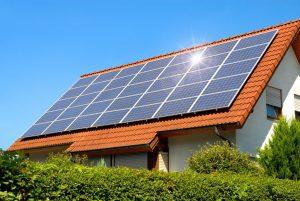Nowadays, a pool is a must-have recreational facility for homeowners. Think about a lazy afternoon swimming workout, poolside parties, soaking the sun, and you will understand the importance of pools. However, owning a pool brings its fair share of problems. It requires routine cleaning and care. Here are some pointers for maintaining your swimming pool:
Monitor the pH Levels
Pool chemistry might be intimidating, but it’s very straightforward. One test that you need to perform regularly involves checking the pH levels of your pool water. The pH scale ranges from 0 to 14. Low pH (below 7) indicates that your pool is acidic, while the reverse shows that your pool is basic. Extreme high or low pH causes swimmer irritation and may ruin pool equipment.
Muriatic acid has been used for a long time to adjust pool pH. Yet, such acids pose tremendous hazards, particularly to children. Muriatic acid alternatives for pools are much safer and user-friendly. These alternatives employ the use of organic control systems like carbon dioxide to alter the pH.
Use the Right Method to Shock Your Pool

Pool shocking involves raising the chlorine levels of your pool for an extended period to inactivate bacteria and other pathogenic microorganisms. You should do this procedure twice a season, and whenever you host mega pool events like parties.
Shocking should be done with extreme caution. You risk destroying your pool filters and liners if you under or over-chlorinate. The ideal way of shocking your pool is by mixing warm water with concentrated chlorine, then evenly pouring the mixture to your pool. Always shock your pool at night since sunlight reduces the effectiveness of chlorine.
Pump and Filter Care
Pool pumps should run for 24 hours every day to achieve optimal filtration. However, such a scenario is highly impractical. You’ll spend big bucks in energy costs and in purchasing a capable pump. The ideal alternative is to run your pump daily for eight consecutive hours. Such consistent circulation will keep your water fresh, healthy, and clean.
It’s an excellent practice to backwash your filters regularly. Once a month should be fine, but you can backwash whenever you feel that your pool has collected a lot of debris or when the pressure gauge shows a pressure rise.
Be Wary of Alkalinity
The total alkalinity of pool water is closely related to the pH levels. Alkalinity acts as a buffer that thwarts surges in the basicity and acidity of water. Your pool’s alkalinity should range between 100 – 150 ppm. If your pool’s alkalinity is high (above 200 ppm), you’ll experience issues like scale deposits on walls, cloudy water, and degradation of plumping and other equipment.
Low alkalinity results in an increase in pool acidity, which in turn damages liners. To avoid the mentioned issues, you’ll need to test your pool water weekly. You can use sodium bicarbonate to counter low alkalinity. Products like Alkajuster will help you to raise the alkalinity of pool water.
Routine Care
Maintaining and cleaning your swimming pool isn’t a one-off thing. It requires nothing short of total dedication. If you encounter unfixable problems, you can turn to professionals.






